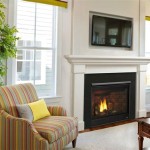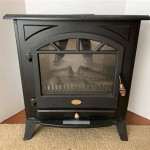Fireplace Trim Molding: Enhancing Aesthetics and Value
Fireplace trim molding serves as a crucial design element when constructing or renovating a fireplace. It bridges the gap between the fireplace surround and the surrounding wall, providing both functional and aesthetic benefits. Selecting the appropriate trim involves considering factors such as material, style, and installation methods. Ultimately, the chosen trim complements the overall design of the room and enhances the fireplace's visual appeal.
The function of fireplace trim molding extends beyond mere decoration. It helps to create a finished look by concealing any imperfections where the fireplace material meets the wall. This is particularly important with materials like brick or stone, which can be uneven or have rough edges. A well-chosen trim can also act as a visual frame, drawing attention to the fireplace and making it a focal point of the room.
The selection process often begins with evaluating the existing décor. The style of the trim should be consistent with the overall design aesthetic. For instance, a traditional home might benefit from ornate, classic moldings, while a modern space could call for clean, minimalist designs. The chosen material must also be durable and suitable for the heat generated by the fireplace. Careful consideration of these factors ensures that the trim will be both visually appealing and long-lasting.
Material Options for Fireplace Trim Molding
Several materials are available for fireplace trim molding, each offering unique properties and aesthetics. Wood, MDF (Medium-Density Fiberboard), polyurethane, and stone are among the most common choices. Understanding the characteristics of each material is essential for making an informed decision.
Wood trim molding is a classic choice, offering a warm and natural look. It can be easily painted or stained to match existing décor. Hardwoods like oak, maple, and cherry are popular choices for their durability and beautiful grain patterns. However, wood is susceptible to moisture and can warp or crack if exposed to excessive humidity or extreme temperature fluctuations. Therefore, it's important to seal wood trim properly and ensure adequate ventilation around the fireplace.
MDF is an engineered wood product made from wood fibers and resin. It's a more affordable alternative to solid wood and provides a smooth, consistent surface for painting. MDF is less prone to warping than solid wood and is generally more resistant to moisture. However, it's not as strong as solid wood and can be damaged by impacts. MDF is a good option for trim that will be painted and isn't subject to physical stress.
Polyurethane trim molding is a synthetic material that replicates the look of wood or plaster. It's lightweight, easy to install, and resistant to moisture, insects, and rot. Polyurethane is a good choice for areas prone to dampness or where low maintenance is a priority. It can be painted or stained, although the finish may not be as authentic as with wood. Polyurethane is available in a wide range of styles and profiles, making it a versatile option for various design schemes.
Stone trim molding offers a more substantial and rustic look. Natural stone, such as marble, granite, or limestone, can be used to create a grand and elegant fireplace surround. Stone is durable, heat-resistant, and adds significant value to a home. However, it's also expensive and requires professional installation. Faux stone alternatives are available, which offer a similar aesthetic at a lower cost and with easier installation. Stone is a good choice for traditional or contemporary homes seeking a high-end, durable finish.
Styles and Designs of Fireplace Trim Molding
The style of fireplace trim molding should complement the overall architectural style of the room. Various styles are available, ranging from simple and minimalist to ornate and traditional. Choosing the right style can significantly enhance the fireplace's appearance and contribute to the room's overall ambiance.
Traditional styles often feature intricate details such as carvings, fluting, and dentil molding. These styles are typically found in older homes with classic architectural details. Common elements include crown molding, baseboards, and chair rails. Traditional trim is often made of wood and stained or painted in rich, warm colors.
Modern styles emphasize clean lines and simplicity. Minimalist trim is often used in contemporary homes and features a smooth, unadorned surface. Common materials include MDF or metal, and colors are typically neutral, such as white, gray, or black. The focus is on creating a sleek and uncluttered look.
Transitional styles blend elements of both traditional and modern design. These styles often feature a simplified version of traditional moldings, with less ornamentation and cleaner lines. Transitional trim is versatile and can be used in a variety of homes. Materials can include wood, MDF, or polyurethane, and colors are often muted and sophisticated.
Rustic styles evoke a natural and earthy feel. These styles often feature rough-hewn wood, exposed grain, and natural textures. Common materials include reclaimed wood or stone. Rustic trim is often used in cabins, lodges, or homes with a country-inspired aesthetic. The look is intended to be informal and inviting.
Beyond general styles, the profile of the trim molding also plays a critical role. The profile refers to the shape of the molding when viewed from the side. Common profiles include cove, ogee, quarter round, and bullnose. The choice of profile depends on the desired aesthetic and the specific location of the trim. For example, crown molding typically has a more elaborate profile than baseboard molding.
Installation Considerations for Fireplace Trim Molding
Proper installation of fireplace trim molding is crucial for achieving a professional and visually appealing result. Incorrect installation can lead to gaps, uneven surfaces, and potential safety hazards. Whether the installation is a do-it-yourself project or handled by a professional, understanding the key steps and considerations is essential.
Before beginning the installation, it's important to gather the necessary tools and materials. These typically include a miter saw, measuring tape, level, nail gun or hammer, construction adhesive, caulk, and safety glasses. Ensure that the work area is clean and well-lit. Accurate measurements are essential for cutting the trim pieces correctly.
The first step is to determine the layout of the trim. This involves deciding where the trim will be placed and how it will be joined at the corners. Common corner joints include mitered corners (45-degree angles) and cope joints (where one piece is cut to fit the profile of the other). Mitered corners are often used for simple shapes, while cope joints are preferred for more complex profiles.
Cutting the trim pieces accurately is crucial for a seamless fit. A miter saw is the best tool for making precise cuts at the correct angles. Take the time to measure and mark each piece carefully before cutting. It's always a good idea to make a test cut on a scrap piece of wood to ensure the saw is properly adjusted.
Once the trim pieces are cut, they can be attached to the wall or fireplace surround using construction adhesive and nails. Apply a bead of adhesive to the back of the trim and then press it firmly into place. Use a nail gun or hammer to secure the trim with nails, spacing them evenly along the length of the piece. Be careful not to drive the nails too deep, as this can damage the trim.
After the trim is installed, fill any nail holes or gaps with caulk. Smooth the caulk with a damp sponge or finger to create a seamless finish. Once the caulk is dry, the trim can be painted or stained to match the surrounding décor. Apply multiple coats of paint or stain for a durable and consistent finish.
For installations involving stone or other heavy materials, professional assistance may be required. These materials often require specialized tools and techniques to install properly. A professional installer can ensure that the trim is securely attached and that the finished product is both visually appealing and structurally sound.
In conclusion, fireplace trim molding is a versatile design element that can enhance the aesthetics and value of a home. By carefully considering the material, style, and installation methods, homeowners can create a fireplace that is both beautiful and functional. The proper selection and installation of trim molding contributes significantly to the overall appeal and comfort of the living space.

Antique Brick And White Molding Fireplace Makeover Maison De Pax

Fireplace Molding Ideas Adding Visual Interest And Height

Diy Farmhouse Trim Above The Fireplace Top Shelf

Fireplace Mantels Molding Remodel Simple

Adding Visual Interest And Height To Your Fireplace Remodelando La Casa

Mouldings Can Be A Beautiful Thing Except For When They Re Not Designed

Antique Brick And White Molding Fireplace Makeover Maison De Pax

How To Add Wood Trim Above Fireplace Mantle

Fireplace Mantel Design And Creation By Jl Molding In New Jersey

Makeover Fireplace This Winter To Look Good For Summer Intrim Mouldings








